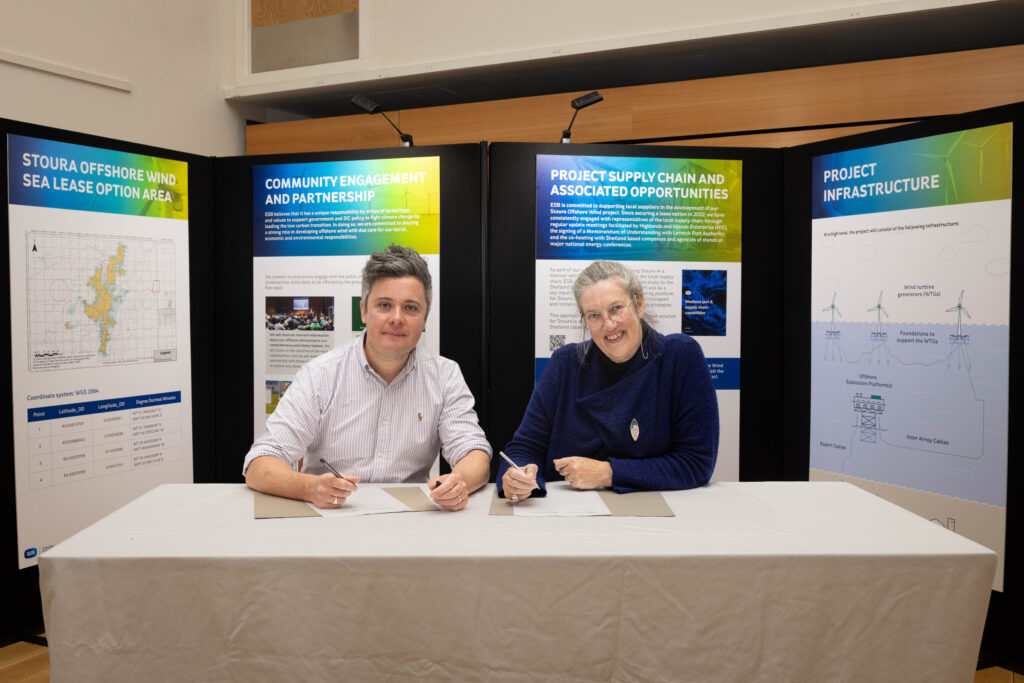ESB and the University of Highlands and Islands (UHI) Shetland have signed a memorandum of understanding (MoU) for the 500 Stoura floating offshore wind farm in Scotland.
The collaboration focuses on education, data sharing, research, and environmental monitoring. Both organizations aim to develop skills necessary for meeting the Scottish Government’s climate targets.
“A central focus of this MoU will be replicating the success of the Shetland Oil Terminal Environmental Advisory Group (SOTEAG) in the context of a floating wind farm,” said Cian Desmond, Stoura Project Director at ESB.
“Collaborating with UHI Shetland’s experts can transform Stoura into a living laboratory, offering training opportunities and fostering a local knowledge economy in floating wind.”
ESB and UHI Shetland recently conducted their first collaboration with a Joint Nature Conservation Committee (JNCC) recognized Marine Mammal Observer (MMO) Training course in Scalloway.
This program aims to promote environmental employment in the marine renewable sector and supports species protection as Scotland expands its offshore wind energy production.
The presence of Marine Mammal Observers in Shetland will help develop the Stoura floating offshore wind farm with minimal disruption to marine life while providing local jobs, according to ESB.
The Stoura wind farm is located east of Shetland on a seabed area identified in the Scottish Government’s Sectoral Marine Plan for Offshore Wind.
The lease option was awarded to ESB in 2022 by Crown Estate Scotland through the ScotWind process.
The offshore site is about 40 kilometers from Shetland, with water depths between 100 and 130 meters.
It’s estimated the project will generate up to 500 MW of clean electricity, enough to power 350,000 Scottish homes.
Follow offshoreWIND.biz on:
Original Story at www.offshorewind.biz
